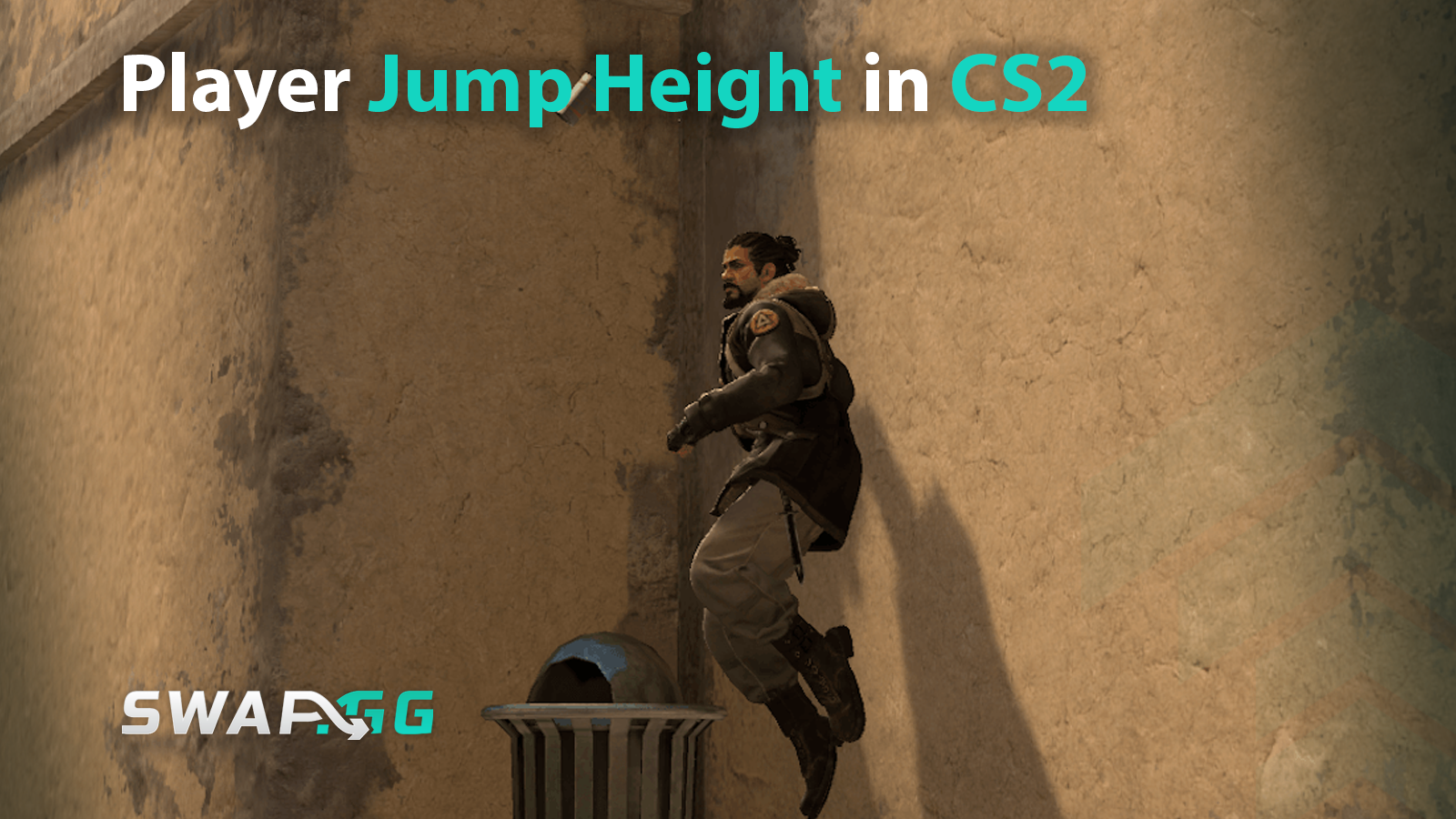Player Jump Height in CS2: The Ultimate Guide

Publié le dans CS2

Movement mechanics are a cornerstone of Counter-Strike 2’s gameplay, influencing everything from map navigation to combat efficiency. Among these mechanics, player jump height plays a pivotal role in shaping how players interact with the game world. Whether you’re dodging a grenade mid-air or scaling a rooftop shortcut, understanding jump height can elevate your performance. This article clarifies the technical and strategic aspects of jump height in CS2, offering insights grounded in verified data and community expertise.
What is the Player Jump Height in CS2?
Counter-Strike 2 retains the foundational movement principles of its predecessors while refining physics for modern gameplay. The default jump height in CS2 is approximately 66 units, a notable increase compared to previous titles. This jump height can extend up to around 71 units when jumping from angled surfaces, and crouch jumps typically reach about 64 units at eye level, allowing for greater vertical mobility and access to strategic positions.
In addition to these values, Valve introduced a precision adjustment in the 2024 update that standardizes jump height consistency to within ±0.015625 units. This enhancement resolves positional inaccuracies near map origins (0,0,0), making jumps more predictable and reliable for competitive play.
Another important factor influencing jump height in CS2 is player stamina. Stamina at the moment of takeoff directly affects how high a player can jump, a mechanic visible through the cl_showpos 2 command, which color-codes stamina levels to indicate potential jump height. This adds a layer of tactical depth, as managing stamina becomes crucial during intense movement and combat scenarios.
Mechanics of Jump Height in CS2
Physics Engine Improvements
The jump mechanics in CS2 are shaped by its Source 2 engine, which controls jump velocity, gravity, and mid-air control. One notable improvement is the consistency in ascent and descent timing, allowing players to reliably replicate movements. Hitboxes also play a subtle but important role during jumps; while they move with the player model, their size and shape remain largely consistent, which influences collision detection with obstacles and enemy fire.
Silent Landings and Map Design
An iconic mechanic in the Counter-Strike series permits players to land silently when falling from heights of 9 units or less without crouching. CS2 retains this fall-height threshold, which continues to influence map design. Mappers craft environments with this precise movement in mind, rewarding players who can master jumps and optimize timing for platforms and hiding spots.
Factors Affecting Jump Height
Jump height in CS2 is shaped by several interrelated factors. The introduction of a stamina system adds depth to gameplay, as fatigued players experience reduced vertical lift. This mechanic encourages players to pace their movements strategically, especially during prolonged firefights or engagements.
Player input also affects verticality and mobility. Crouch-jumping, for example, alters the hitbox positioning mid-air and unlocks access to ledges or spots that standard jumps can't reach. It does not, however, increase vertical jump height on its own. Conversely, strafing or sprinting impacts horizontal control rather than verticality, allowing mid-air adjustments to fine-tune positioning.
Finally, maps themselves often integrate jump mechanics into their design. Mappers leverage the silent landing height of 9 units to create challenges that demand precise execution. For instance, the rooftop on Vertigo requires players to skillfully navigate these mechanics in order to gain key positional advantages.
Strategic Implications of Jump Height
Map Navigation
Jump height dictates access to high-ground positions and shortcuts. Notable examples include Anubis (Rooftop routes on bombsite B), as well as Dust II (Mid-connect pipe jumps for aggressive plays).
Combat and Evasion
While horizontal movement is critical for dodging bullets, mid-air repositioning can disrupt enemy aim or evade grenades. However, CS2’s hitbox dynamics make landing mid-combat riskier than in prior titles.
Exploits and Techniques
Competitive players leverage jump physics for:
- Ladder Climbs: Exploiting collision checks to bypass map boundaries.
- Jump Bugs: Glitching through walls via precise timing (patch-dependent).
Conclusion
Player jump height in CS2 is more than a simple mechanic, and it’s a blend of physics, strategy, and creativity. From silent landings to map-specific tactics, mastering jumps can turn the tide of battle. As Valve continues refining movement systems, staying informed about updates and community techniques will keep players ahead of the curve. Whether you’re climbing Vertigo’s skyscrapers or dodging a flashbang mid-air, understanding jump height is key to dominating in CS2.
Publié le dans CS2
![[THUMBNAIL] Is 7.1 Surround Good for CS2? The Reality Behind Virtual Audio](https://swap.gg/cdn-cgi/image/f=auto/https://blog.swap.gg/content/images/2025/12/Is-7.1-Surround-Good-for-CS2_.png)
![[THUMBNAIL] Is CS2 CPU or GPU-intensive? What Hardware Actually Matters](https://swap.gg/cdn-cgi/image/f=auto/https://blog.swap.gg/content/images/2025/12/Is-CS2-CPU-or-GPU-intensive_.png)
![[THUMBNAIL] What Is the Cheapest Knife in CS2? Your Complete Budget Guide](https://swap.gg/cdn-cgi/image/f=auto/https://blog.swap.gg/content/images/2025/12/cheapest-knives.png)